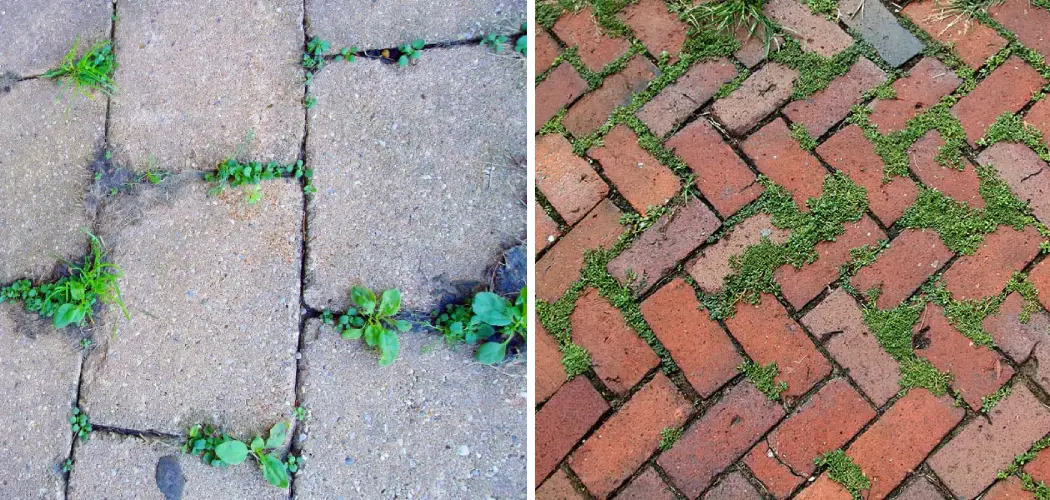Keeping your pavers looking neat and clean can be a challenge especially when pesky grass starts to take hold, rapidly spreading between your stones. It is important o know how to keep grass from growing between pavers.
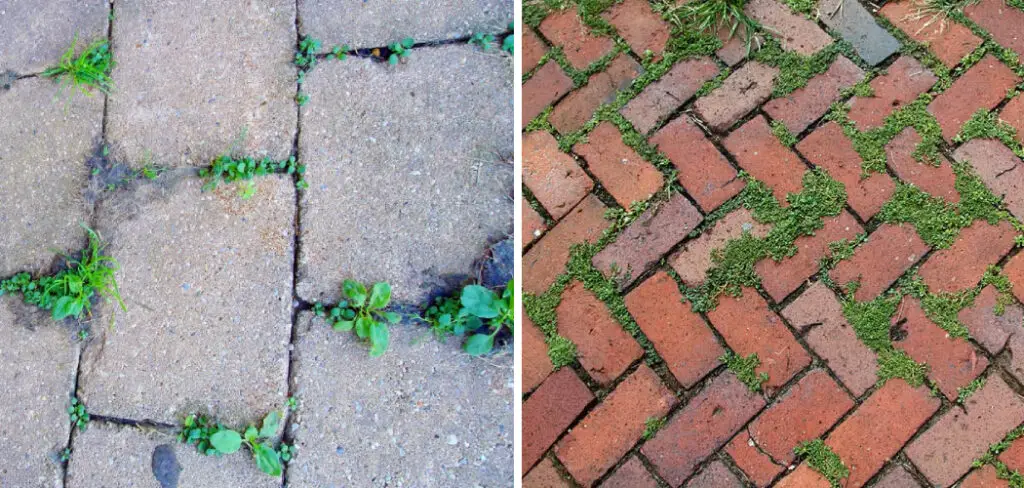
While it may seem like an unwinnable battle, preventing grass from taking over the spaces in between your hardscapes is quite simple with a few easy tips and tricks. In this blog post, we’ll discuss everything you need to know to keep your pavers looking perfect without any weeds or invasive plants peeking through!
Tools You Will Need
- Weed killer
- Mulch
- Paver edging
6 Steps Guide on How to Keep Grass From Growing Between Pavers
1. Use a Weed Killer
Using a spray or granular pre-emergent weed killer can help prevent grass and other invasive plants from taking hold of your pavers.
Keeping grass and other invasive plants from growing between your pavers takes some proactive measures. The most cost-effective way to keep patio paver surfaces clear of weed growth is using a quality pre-emergent weed killer. You can apply this either as a spray or as granules, depending on the type of need killer you choose.
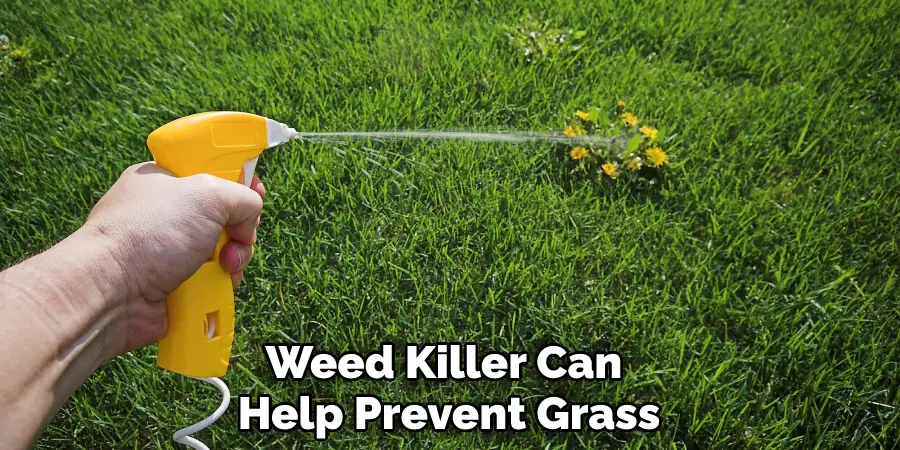
Once applied correctly and at the right time, this type of weed killer creates an effective barrier layer over the surface of your pavers – stopping any germinating weeds from taking root, and significantly reducing future maintenance.
2. Add Mulch
Spread a few inches of mulch around the perimeter of your paver area to create an extra barrier for invaders.
Adding mulch around the perimeter of your paver area is an effective way to keep grass from growing in between pavers without having to resort to chemical weed killers. Mulch provides a thick barrier that prevents light and water from reaching weeds, and over time as it decomposes, helps fertilize the soil for your existing foliage.
When adding mulch, keep it a few inches thick and away from any pavers or other hardscaping; otherwise, you can create pathways for both pests and weeds. Furthermore, it’s essential to regularly check the mulch for signs of insects or disease so that you can address any issues before they become too widespread.
3. Install Paver Edging
Installing edging around the perimeter of the pavers will help create a physical barrier to prevent grass and other plants from taking root.
Installing edging around the perimeter of pavers is an effective way to keep grass and other plants from taking root in between the stones.
Paver edging is relatively easy to install and comes in a variety of materials such as metal, plastic, or concrete.
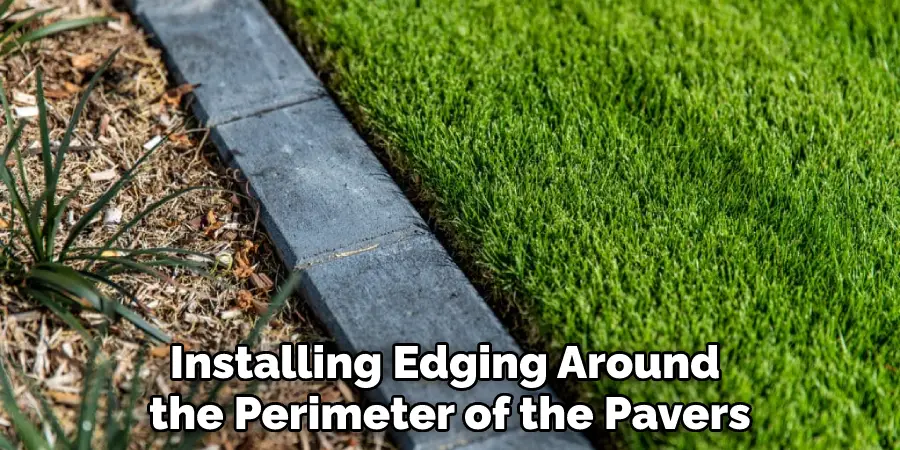
When installing edging, it’s important to pay attention to the depth, as deeper edging will be more effective at keeping out weeds. Although installation is fairly simple, taking the time to properly install paver edging will ensure that your newly installed pavers stay looking nice and free of unwanted growth for years to come.
4. Be Consistent in Weeding
Regularly pull out any weeds or grass that has already taken hold between your pavers. This will help reduce the number of new plants that can take root and also keep your pavers looking neat.
Regular weeding is essential to keeping grass from growing between pavers. Pulling out weeds or other plants as soon as they arise will reduce the amount of undesirable vegetation and keep your pavers looking neat. Venturing outside regularly and taking a quick peek at the pavers can help you spot any weed germination before it becomes too prolific.
Ensuring that you stay on top of the problem and don’t end up with an unmanageable mess further down the line. Plus, identifying these spots early means less time and effort spent thoroughly cleaning years worth of weeds come winter.
5. Cut the Grass Around the Pavers:
Make sure to regularly mow or trim any long grass growing around the perimeter of your paver area. This will help reduce the number of seeds that could end up between your stones.
Caring for the pavers in your outdoor living space is essential to maintain the look of your property. To bring life back to your patio or sidewalk area, regular cutting of any long grass is an important step.
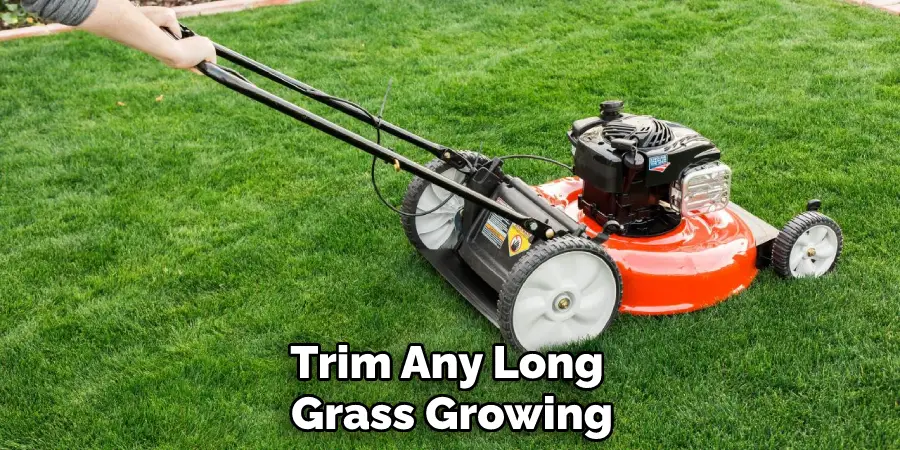
Careful trimming will help reduce the possibility of any weed seeds germinating and growing between the pavers. This will keep grass from taking over, making it easy to revive a neat exterior for all to enjoy.
6. Pressure Wash:
Pressure washing your pavers regularly will help remove any dirt and grass that has already taken hold between the stones.
Pressure washing your pavers regularly is an excellent way to maintain your outdoor living space and keep it looking pristine. Pressure washing utilizes high-pressure water to blast away dirt and grass that may have taken hold between the stones of the paver surface.
Pressure washing not only helps remove unwanted growth and buildup, but it also prevents any further grass from growing, which can be especially inconvenient in areas prone to frequent weeds. Furthermore, this simple step can help your outdoor space look orderly and well-presented for longer periods, making it easier to enjoy.
Using these simple steps, you can keep your pavers looking perfect and free of weeds or other invasive plants! With just a little bit of maintenance and care, you can ensure your pavers remain neat for years to come.
6 Tips to Keep Grass From Growing Between Pavers
- One of the best ways to keep grass from growing between pavers is to regularly clean the area with a hose or pressure washer. This will remove any dirt, debris, or pollen that may be trapped between the pavers, which can provide a food source for grass seeds. Additionally, it is important to make sure that the pavers are dry before applying any type of herbicide or pesticide, as these products may not be effective if applied to wet pavers.
- Another way to prevent grass from growing between pavers is to apply a herbicide or pesticide specifically designed to kill the grass. There are many different products available on the market, so it is important to read the labels carefully and choose a product that is safe for use around people and pets. It is also important to follow the directions on the label carefully, as applying too many of these products can damage the pavers.
- Landscape fabric is a type of material that is often used in gardening and landscaping applications. It is typically made from woven polypropylene and can be used to control weeds and grasses. When using landscape fabric, it is important to make sure that it covers the entire area between the pavers and extends beyond the edges of the paving stones. This will ensure that no grass or weeds can grow through the fabric and into the gaps between the pavers.
- Edging stones are another option for preventing grass from growing between pavers. These stones are placed along the edge of the paving stones and create a barrier that prevents grasses and other plants from spreading into the gaps between the pavers. Edging stones come in a variety of materials, including concrete, stone, plastic, and metal.
- Mulch is a type of material that is often used in landscaping applications. It can be made from organic materials such as bark or leaves, or inorganic materials such as gravel or stone. Mulch helps to prevent weed growth by blocking sunlight and preventing moisture from reaching the soil surface. When using mulch, it is important to make sure that it does not touch the base of the paving stones, as this can cause staining.
- Ground cover plants are another option for preventing grass from growing between pavers. These plants spread quickly and densely, creating a mat-like covering over the ground that blocks sunlight and prevents weed growth. Some common ground cover plants include ivy, clover, thyme, and sedum.
- Paver extensions are small pieces of material that extend beyond the edge of paving stones. They can be made from a variety of materials, including plastic, metal, or concrete. Paver extensions create a barrier that prevents grasses and other plants from spreading into the gaps between paving stones.
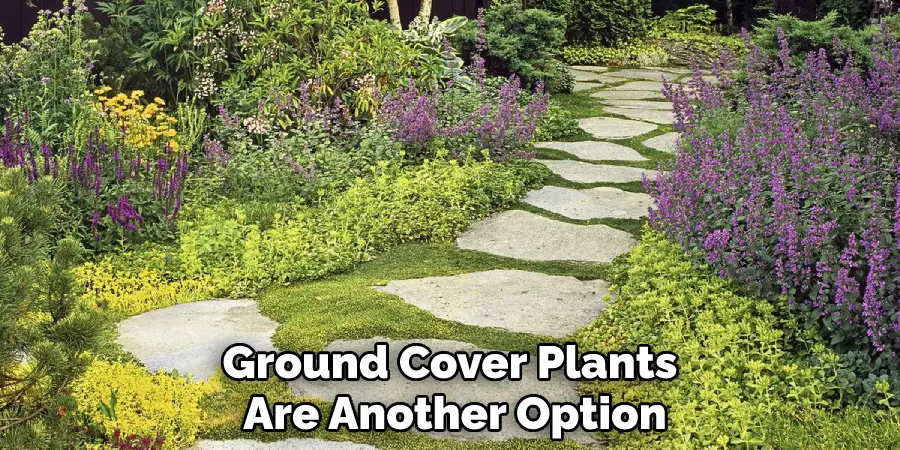
Additionally, they can also help to stabilize paving stones and prevent them from shifting over time.
Frequently Asked Questions
How to Maintain Your Pavers and Prevent Unwanted Weeds and Grasses?
Keeping your pavers in good condition requires some effort but is worth the work. Regularly removing weeds and grasses is important to maintaining the look and longevity of your pavers. The most effective way to rid your pavers of unwanted foliage is with a weed whacker or weed eater tool.
For best results, this should be done often – once every couple of weeks or so – as it prevents lawns from becoming overly crowded with weeds and grasses. Before starting the job, make sure that you check for any areas where water may pool or sit after rain or watering, as these areas are frequently prone to both mold and weed growth.
An additional layer of protection against weeds can be provided by applying an herbicide solution, which will help give lasting fence results if applied consistently. Taking into consideration these practices will help extend the life of your paving stones while providing aesthetic appeal year-round.
How To Stop Weeds From Growing In Between Paver Stones?
Controlling weeds between paver stones can be a challenging and time-consuming task. The best way to stop them from growing is through prevention. Before you lay down the paver stones, make sure that you thoroughly prepare the ground. Clear away old brush and foliage, making sure to dig up any roots.
Applying a layer of weed barrier fabric can help keep weeds at bay while still allowing water and air to move through the soil.
Additionally, use organic mulch such as wood chips or bark to cover the fabric to keep it hidden and increase its effectiveness over time. Don’t forget about regular maintenance!
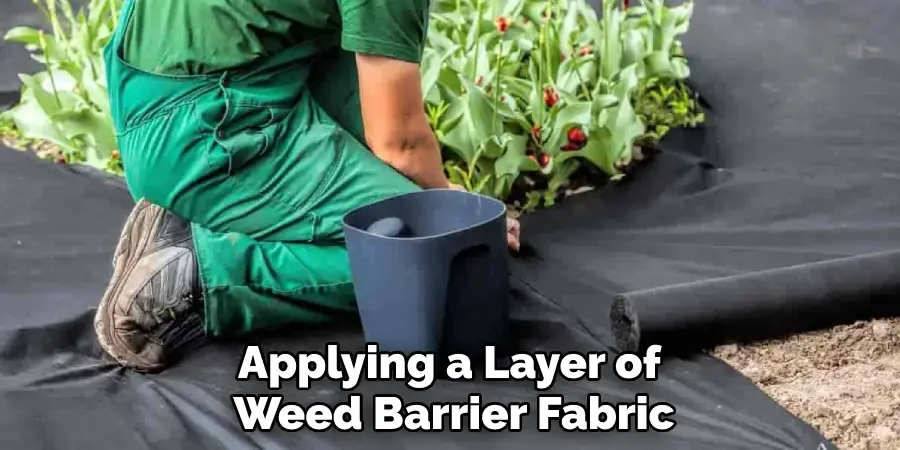
Pulling out any visible weeds may seem like a tedious chore, but it will go a long way in preventing more from appearing in the future. With these techniques, keeping your paver stones free of weeds is achievable!
Conclusion
Summertime is the perfect time to show off your lovely patio and backyard hardscaping. You should carefully determine how to keep grass from growing between pavers. Nobody wants to walk out onto a beautiful deck or stone path only to see grass and weeds sprouting up between the cracks.
By following these tips, you can keep your outdoor spaces looking neat all season long – no matter how heavy foot traffic may be. Do you have any additional tips for keeping grass from growing between pavers? Share them with us in the comments below!

